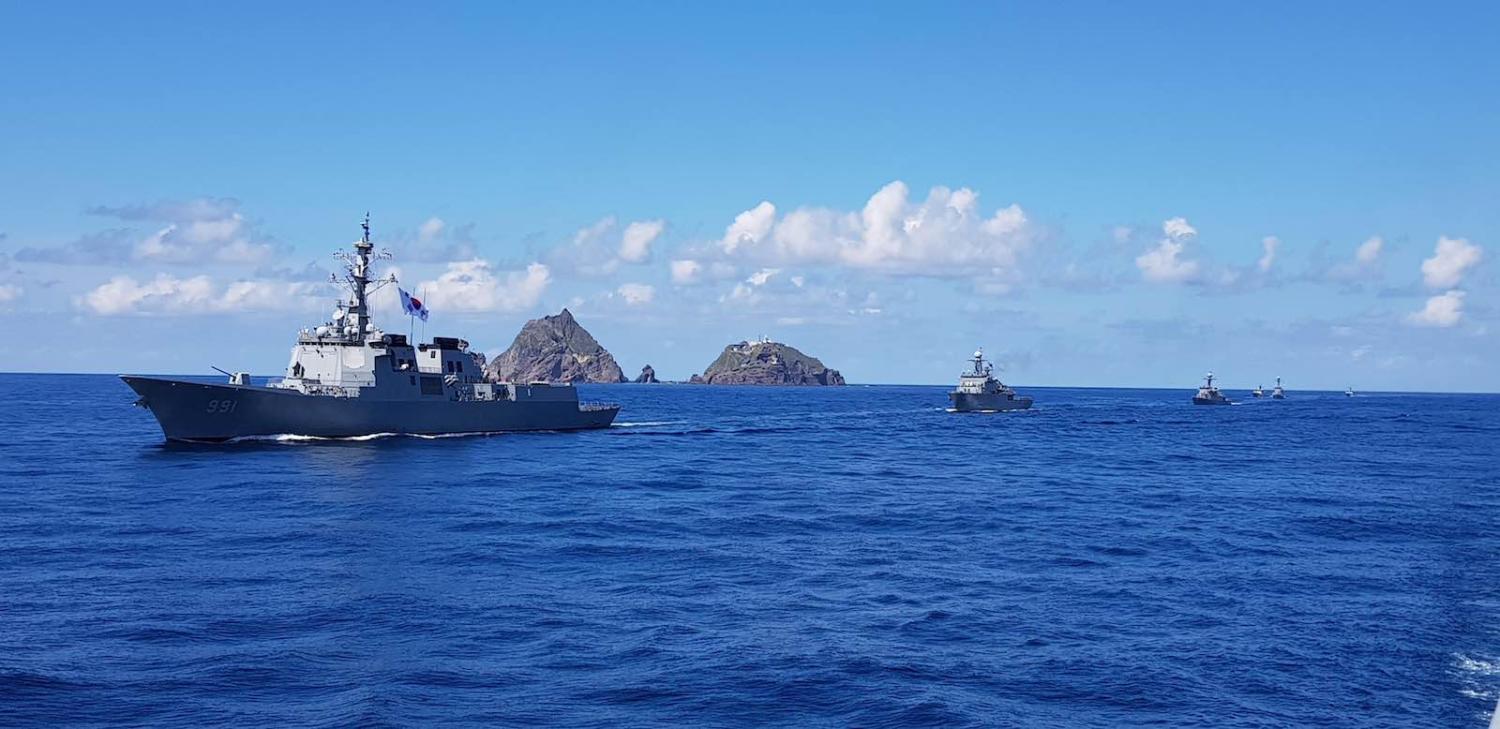In early 2020, Japan reopened its National Museum of Territory and Sovereignty. Displays at the museum in Tokyo assert that islands disputed by Japan, South Korea and North Korea are Japanese territory and refer to these islands as Takeshima. South Korea’s government, which also claims sovereignty over the islands and refers to them as Dokdo, responded by publicly chiding Japan for the reopening and requesting the museum’s closure.
The Dokdo/Takeshima dispute is not a new phenomenon. Rather, the islands, which are located midway between Japan and South Korea, have served as a constant source of tension between the two countries’ governments and citizens since 1945. This dispute is thus key to understanding the tense and, at times, hostile nature of Japan–South Korea relations.
Japan annexed the islands from Korea in 1905 and went on to colonise Korea in its entirety in 1910. During the ensuing 35 years of Japanese rule, Koreans were forced to adopt Japanese names and speak Japanese. Pro-independence Koreans were executed and, during the Second World War, thousands of Korean men were compelled to work as labourers for Japan, while a large number of Korean women, euphemistically referred to as “comfort women,” were forced to serve as sex slaves for the Japanese military.
In 1954, South Korea gained control of Dokdo/Takeshima and has since exercised de facto control over the islands. Successive right-wing and leftist Japanese governments have claimed that the islands are Japanese territory and have argued that South Korea’s control of the islands constitutes an “illegal occupation”.
In 2005, the Japanese prefecture of Shimane declared an annual “Takeshima Day”. In response, two Korean protestors sliced off their little fingers outside the Japanese embassy in Seoul, a site of weekly protests against the Japanese government. Other Koreans responded by publicly burning the Japanese flag – an unsurprising action given that anti-Japanese sentiment is widespread in South Korea. Similarly, in 2012, a Korean man rammed his truck against the gate of the embassy to protest Japan’s claim to the islands. On a 2019 visit, I witnessed an elderly Korean man protesting across the road from the Japanese embassy. The nonagenarian, who was undeterred by the chilly Seoul weather, wore a banner that read: “Dokdo is [the] beautiful territory of the Republic of Korea.”
The Dokdo/Takeshima dispute continues to strain South Korea and Japan’s government-to-government relations. In 2008, Japan’s Ministry of Education issued a manual to Japanese textbook publishers and teachers encouraging them to instruct their students that the islands constitute Japanese territory. In response, South Korea’s government recalled its ambassador to Tokyo. In 2012, when Lee Myung-bak became the first South Korean president to visit the islands, Japan responded by recalling its ambassador to Seoul.
The Dokdo/Takeshima dispute is key to understanding the tense and hostile nature of Japan–South Korea relations.
From the South Korean perspective, the islands are a symbol of pride and a marker of Korean independence from Japanese colonisation. For some Koreans, Japan’s claim to the islands constitutes a denial of Japanese colonial rule over Korea, mitigating the fact that the islands were Korean territory prior to Japan’s 1905 annexing.
In separate longstanding disputes, Japan also contests islands with China and Taiwan, each of which claims sovereignty over potentially resource-rich islands in the East China Sea. Japan refers to the collection of uninhabited islands as the Senkaku Islands and China and Taiwan refer to them as the Diaoyu Islands.
Similarly, Japan and Russia both claim sovereignty over islands that are known in Japan as the Northern Territories and in Russia as the Kurile Islands. These islands, which are Russian-controlled, hold particular significance for Japan as, unlike Dokdo/Takeshima, they are inhabited by ethnic Japanese.
The fact that the Dokdo/Takeshima islands are surrounded by natural resources, notably gas, alongside abundant fishing grounds, makes them important to the Japanese and South Korean governments. These islands are also crucial to Japan as any relinquishment of its territorial claim to Dokdo/Takeshima would likely weaken its claims to islands it disputes with China, Taiwan and Russia.
It is important to note that the Dokdo/Takeshima issue is one of many ongoing points of tension between Japan and South Korea. Japan’s lack of atonement and compensation for Korean forced labourers and the so-called “comfort women” are also key irritants in the bilateral relationship. Similarly, ongoing visits by Japanese government officials to the Yasukuni Shrine in Tokyo, where WWII-era Japanese convicted war criminals are enshrined, have angered South Korean governments and citizens.
Lamentably, 55 years since the establishment of the Treaty on Basic Relations between Japan and South Korea, an amicable relationship between the two states and a resolution of the Dokdo/Takeshima dispute seem unlikely for the foreseeable future.

